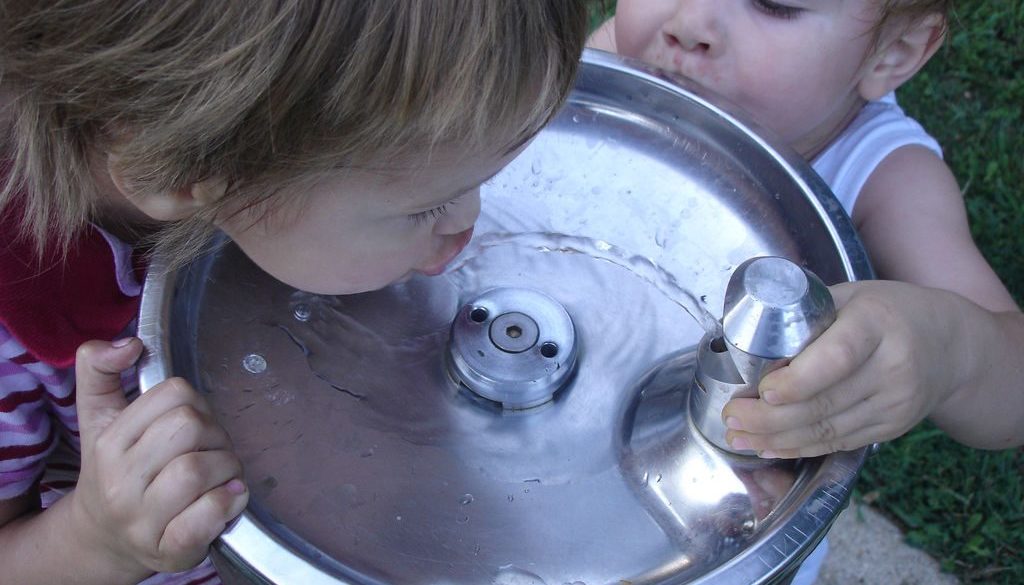California Lawmakers Move to Ensure Lead-Free Water in Child Care Centers
By Susan Little, Environmental Working Group
California lawmakers are moving toward ensuring that lead-free drinking water is required in all child care centers, catching up with Oregon, Washington and four other states.
More than 700,000 California children are enrolled in state-certified child care centers, which are mostly housed in privately owned buildings. Since 2017, state law has required lead testing of water in public schools and child care centers based in schools, but it does not cover privately run child care centers.
Licensing regulations say private child care providers must serve safe drinking water from “non-contaminated fixtures,” which would seem to disallow lead-contaminated water from lead-leaching faucets. But the regulations do not require these centers to test the water children drink or that is used to mix formula.
Local water agencies don’t usually monitor lead levels in private businesses, even if they provide a public service. But based on a sampling of water at public schools and school-based child care centers, there’s reason to be concerned that thousands of children may be drinking water from lead-contaminated faucets.
EWG analyzed limited lead-testing data from the State Water Resources Control Board and found many examples of school drinking water well in excess of the Environmental Protection Agency’s action level of 15 parts per billion, or ppb, of lead. The board is expected to release lead-testing data for all schools soon.
For example, a water fountain at a Daly City elementary school contained 1,900 ppb of lead, a San Francisco school’s water contained 860 ppb, and a fountain in a Bakersfield school had 240 ppb. The drinking water at an East Oakland school’s on-site child care center contained 256 ppb of lead, water at a San Diego school-based child care center had 53 ppb, and a San Bernardino preschool’s water had 25 ppb.
Under federal regulations, lead concentrations in drinking water must be below 15 ppb, and water agencies whose water is found to have higher levels must take action to reduce the water’s lead content. But health experts believe the 15 ppb action level still exposes children to too much lead.
Lead is a severe neurotoxin that can cause health damage that lasts a lifetime. Even small amounts of lead can lower a child’s intelligence, cause behavior and learning problems, slow growth, and harm hearing. The American Academy of Pediatrics recommends that lead be removed from contaminated housing and child care facilities, and that water from fountains in schools should not exceed lead concentrations of more than 1 part per billion.
According to the federal Agency for Toxic Substances and Disease Registry, children absorb half of the lead they ingest, and if a child is malnourished, they will absorb lead faster. Children are exposed to lead in many ways, but the EPA says as much as one-fifth of a child’s exposure to lead is from drinking water. The EPA also estimates that up to 60 percent of formula-fed infants’ lead exposure can come from water used to mix formula.
Lead was banned from paint and gasoline many years ago, but only recently has federal law required the reduction of lead in water pipes and faucets to trace levels. Without regular testing of child care centers’ drinking water, we can’t be sure that hundreds of thousands of children aren’t getting daily doses of the neurotoxin.
EWG is sponsoring legislation by Assembly Member Chris Holden, D-Pasadena, to require the state Department of Social Services and the Water Resources Control Board to develop regulations mandating that all child care centers test their drinking water for lead and act to abate contamination.
But many centers operate on shoestring budgets, so they won’t be able to afford testing and fixing their drinking water systems on their own. The state needs to prioritize the health of our youngest citizens and allocate resources to pay for a centers’ lead tests and remediation when centers can’t manage the costs. At EWG’s request, 22 assembly members and senators have asked the Legislature’s budget committees to provide such funding in next year’s state budget. The committees are now considering this bipartisan request.

